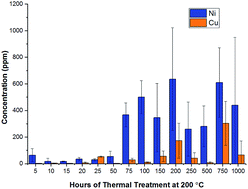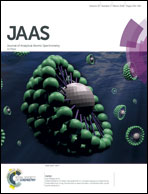Laser ablation ICP-MS for detection of substrate contamination from plated metal contacts in silicon solar cells
Abstract
The use of laser ablation inductively-coupled plasma mass spectrometry (LA-ICP-MS) is introduced for the analysis of substrate contamination from plated metal contacts on silicon solar cells. Solar cells with plated Ni/Cu/Ag contacts were heat treated at 200 °C for up to 1000 hours and the concentration of plated metals in the silicon wafer was determined with LA-ICP-MS. Ablation efficiency was shown to depend strongly on spot size and scan speed, which greatly affected crater properties and transport efficiency. Wet chemical etching using HNO3 + HF/HCl was demonstrated to sufficiently remove surface metals from plated regions for the purposes of metal contamination analysis of solar cells. The LA-ICP-MS technique was successful in demonstrating the penetration of plated metal from the contacts into the silicon wafer during thermal stress testing, and correlating Cu and Ni concentration with an associated exponential reduction in the open-circuit voltage of silicon solar cells, although the individual contributions of each metal were difficult to separate. The large standard deviations (>±50%) in LA-ICP-MS results were theorised to be the result of non-uniformities in the cell processing as well as in the line-scanning method applied in LA-ICP-MS measurements, the latter being able to be addressed by optimisation of laser ablation parameters for silicon solar cells.



 Please wait while we load your content...
Please wait while we load your content...